Abstract
A composting physical model with an experimental chamber with a working volume of 14 × 103 cm3 (0.5 ft3) was designed to avoid exaggerated conductive heat loss resulting from, relative to field-scale piles, a disproportionately large outer surface-area-to-volume ratio. In the physical model, conductive flux (rate of heat flow through chamber surfaces) was made constant and slight through a combination of insulation and temperature control of the surrounding air. This control was based on the instantaneous conductive flux, as calculated from temperature differentials via a conductive heat flow model. An experiment was performed over a 10-day period in which control of the composting process was based on ventilative heat removal in reference to a microbially favorable temperature ceiling (temperature feedback). By using the conduction control system (surrounding air temperature controlled), 2.4% of the total heat evolved from the chamber was through conduction, whereas the remainder was through the ventilative mechanisms of the latent heat of vaporization and the sensible temperature increase of air. By comparison, with insulation alone (the conduction control system was not used) conduction accounted for 33.5% of the total heat evolved. This difference in conduction resulted in substantial behavioral differences with respect to the temperature of the composting matrix and the amount of water removed. By emphasizing the slight conduction system (2.4% of total heat flow) as being a better representative of field conditions, a comparison was made between composting system behavior in the laboratory physical model and field-scale piles described in earlier reports. Numerous behavioral patterns were qualitatively similar in the laboratory and field (e.g., temperature gradient, O2 content, and water removal). It was concluded that field-scale composting system behavior can be simulated reasonably faithfully in the physical model.
Full text
PDF

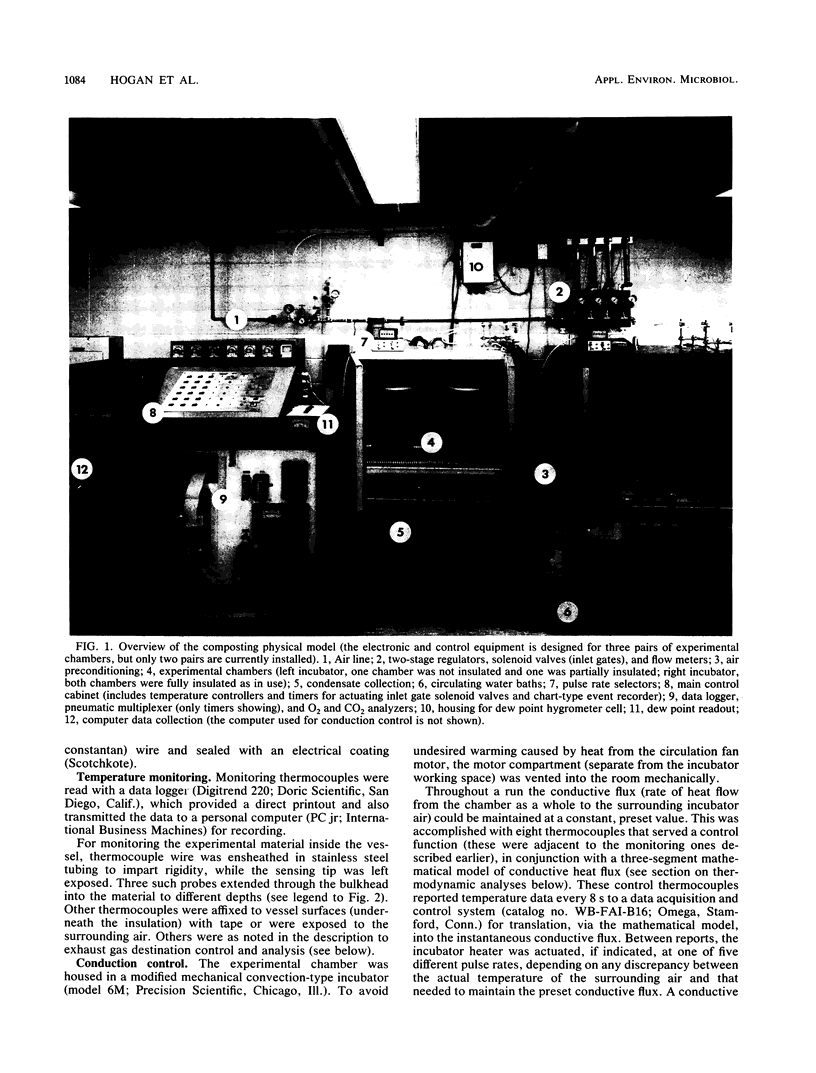
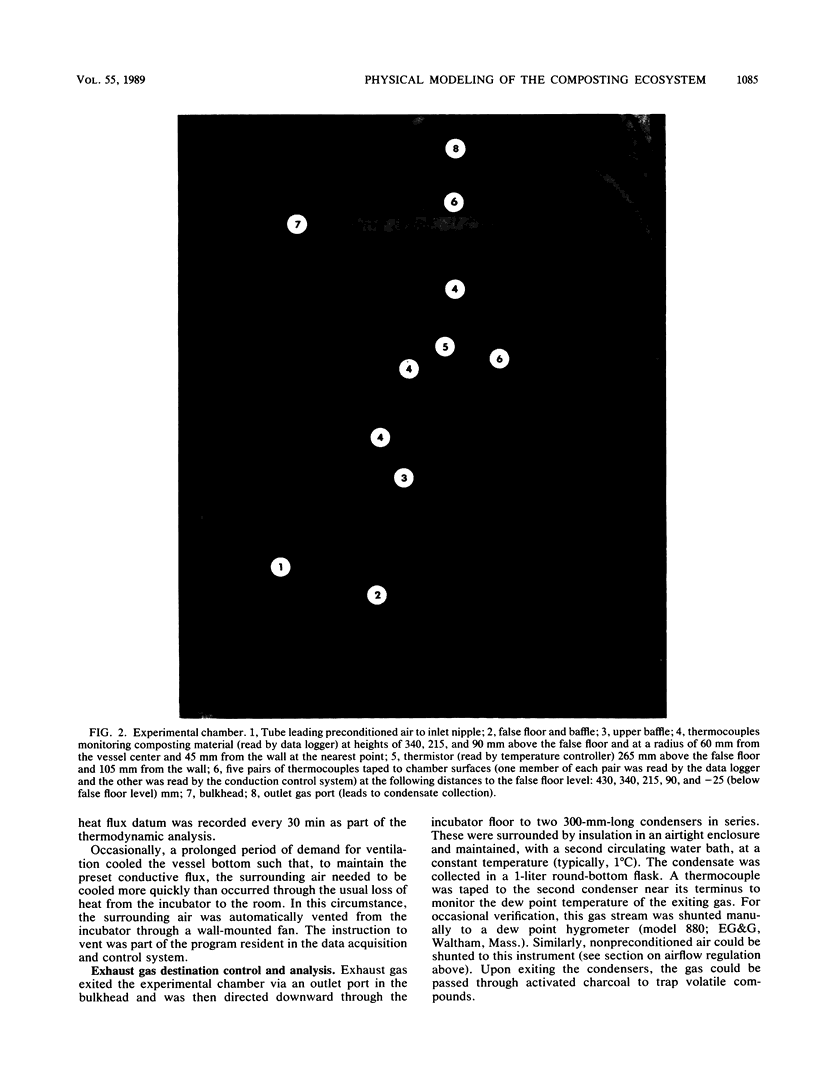

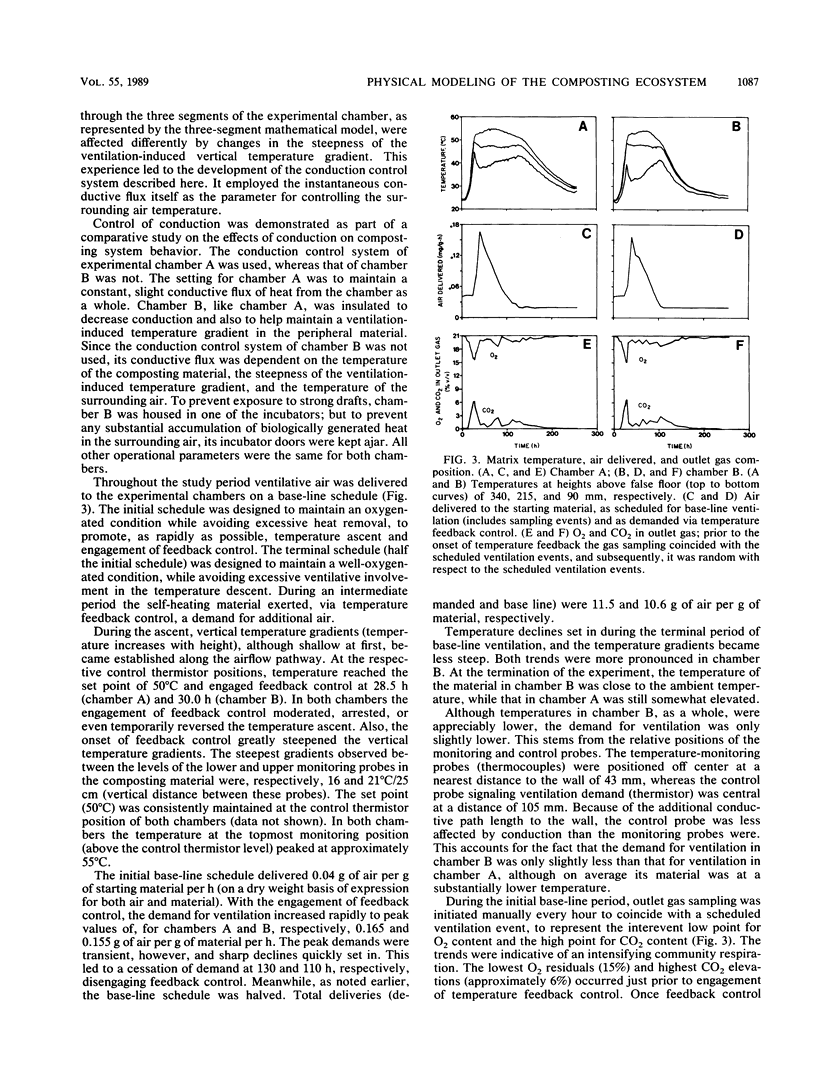
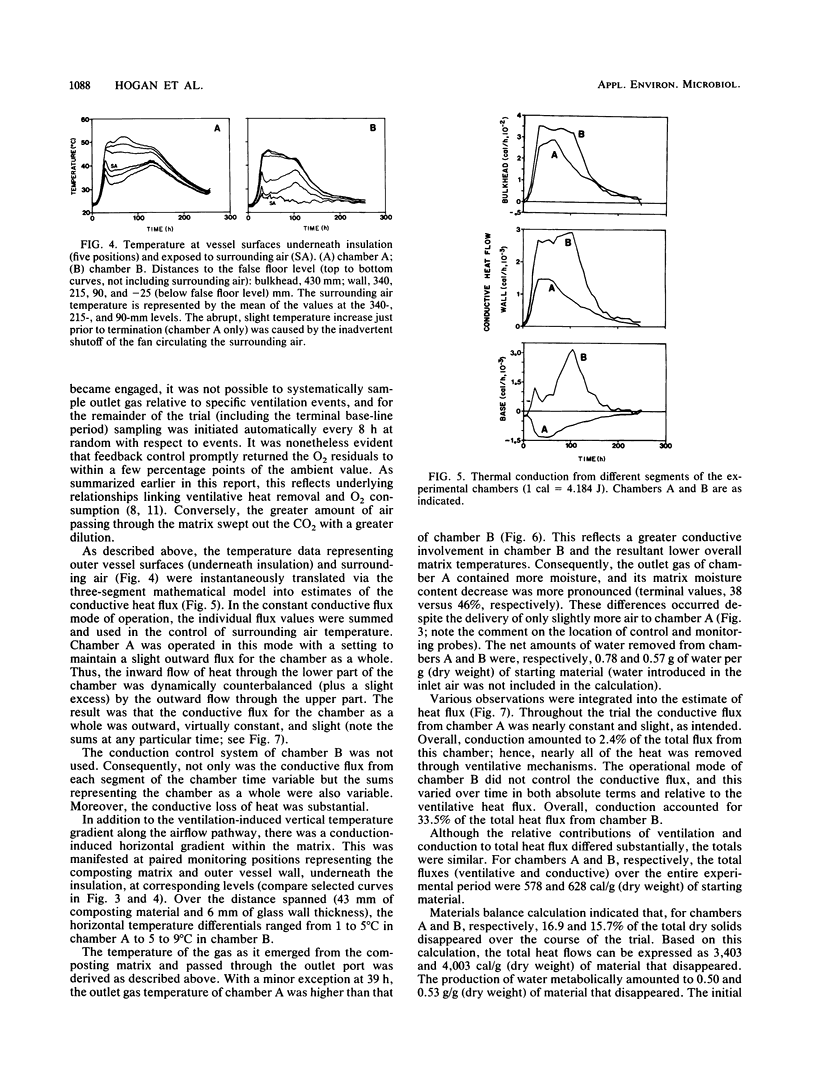

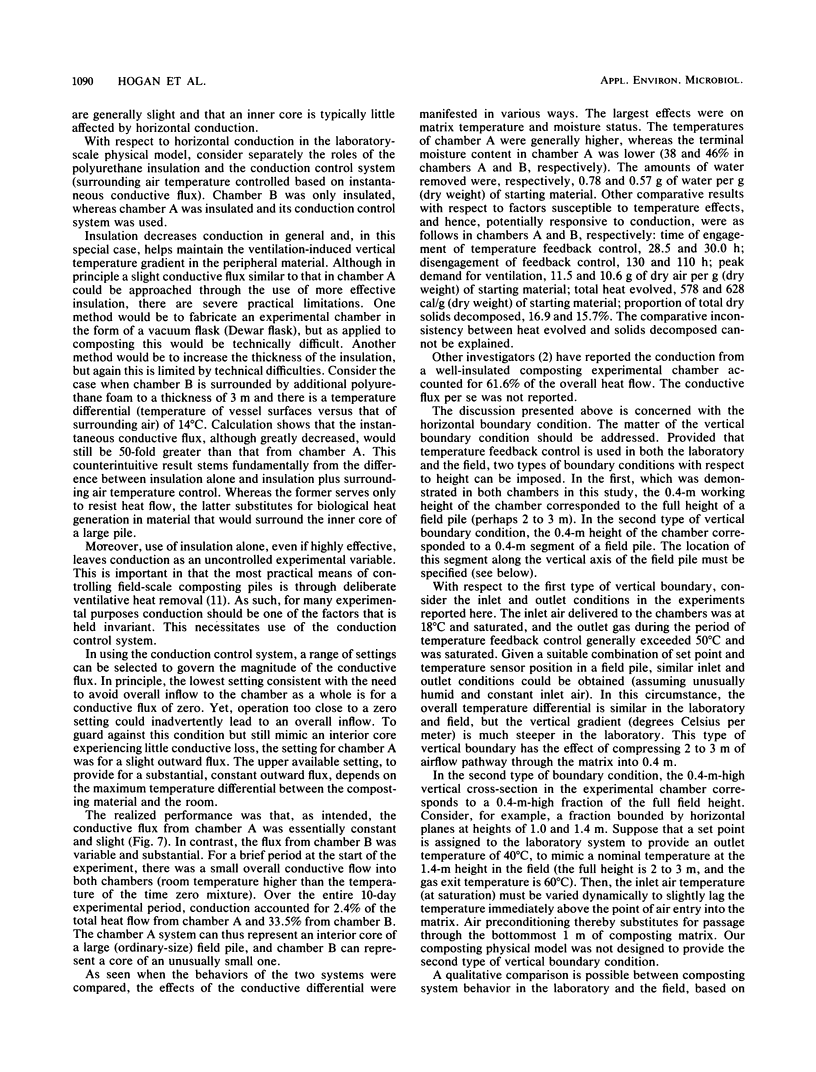
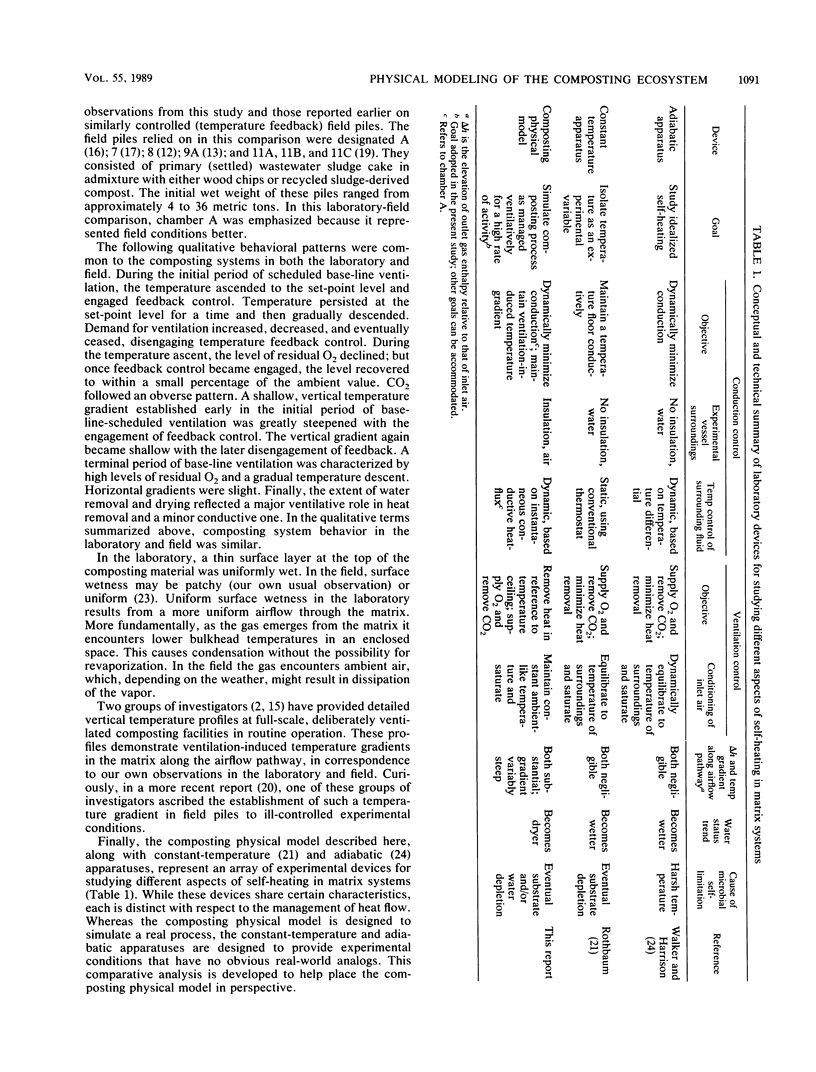
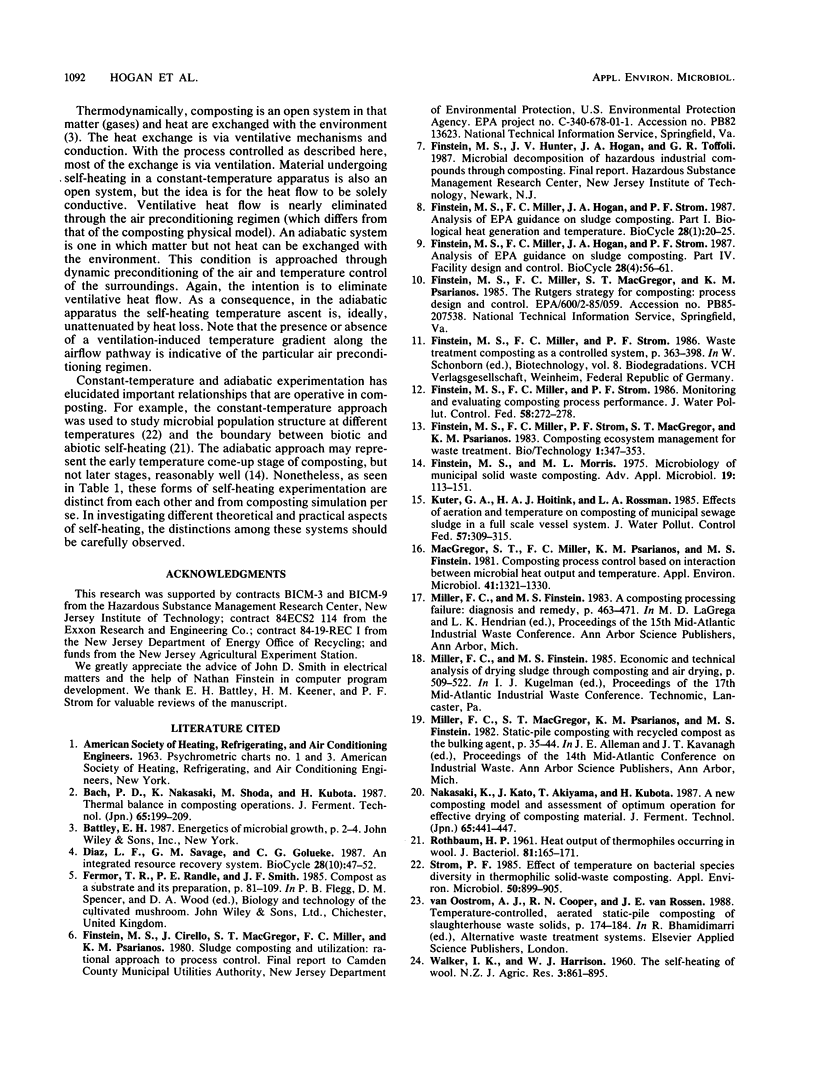
Images in this article
Selected References
These references are in PubMed. This may not be the complete list of references from this article.
- Finstein M. S., Morris M. L. Microbiology of municipal solid waste composting. Adv Appl Microbiol. 1975;19:113–151. doi: 10.1016/s0065-2164(08)70427-1. [DOI] [PubMed] [Google Scholar]
- Macgregor S. T., Miller F. C., Psarianos K. M., Finstein M. S. Composting process control based on interaction between microbial heat output and temperature. Appl Environ Microbiol. 1981 Jun;41(6):1321–1330. doi: 10.1128/aem.41.6.1321-1330.1981. [DOI] [PMC free article] [PubMed] [Google Scholar]
- ROTHBAUM H. P. Heat output of thermophiles occurring on wool. J Bacteriol. 1961 Feb;81:165–171. doi: 10.1128/jb.81.2.165-171.1961. [DOI] [PMC free article] [PubMed] [Google Scholar]
- Strom P. F. Effect of temperature on bacterial species diversity in thermophilic solid-waste composting. Appl Environ Microbiol. 1985 Oct;50(4):899–905. doi: 10.1128/aem.50.4.899-905.1985. [DOI] [PMC free article] [PubMed] [Google Scholar]




